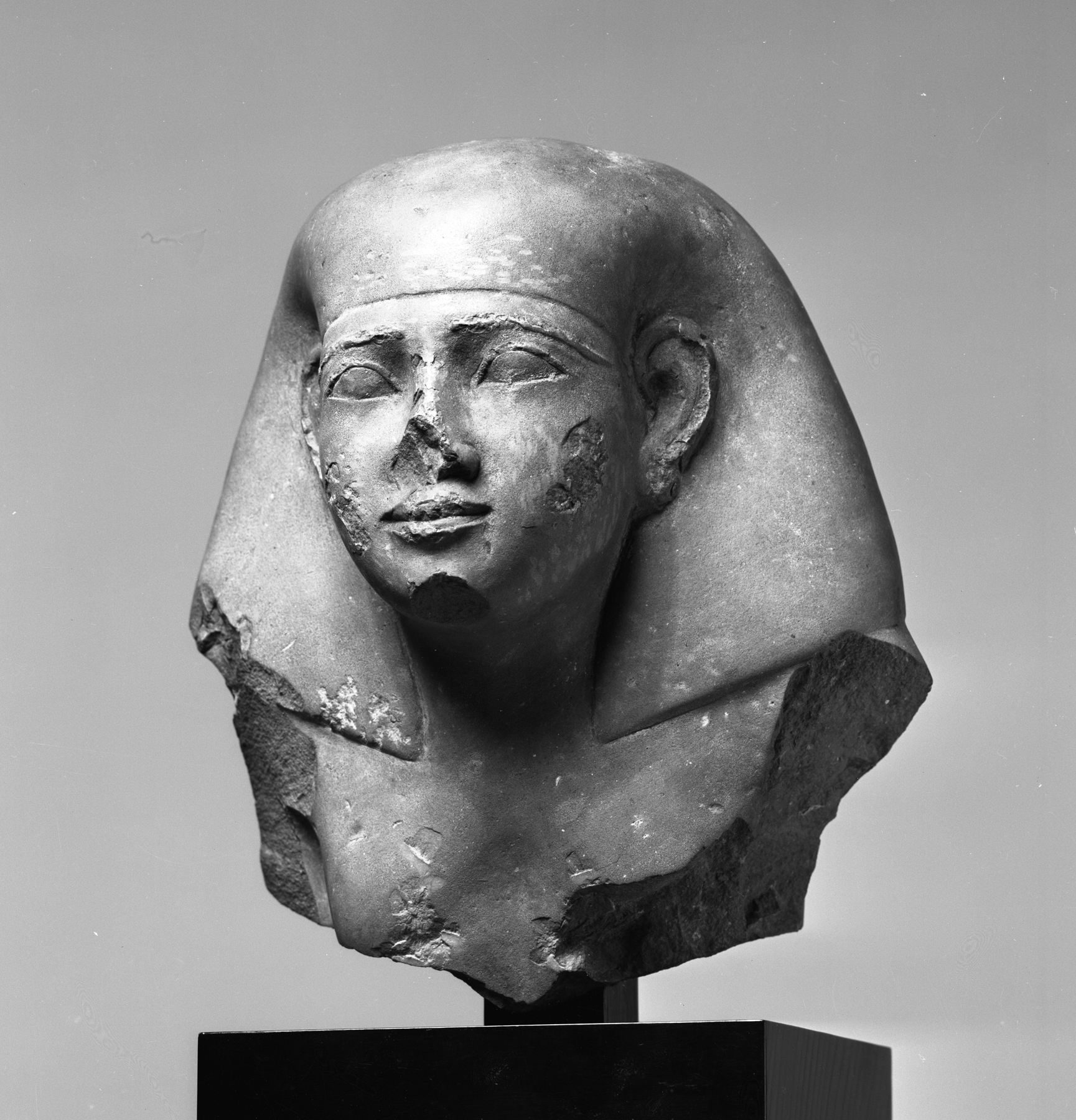Head of a Man
(Ancient Egypt and Nubia )
This fragment most likely is from a seated statue. The inscription is gone, and with it the name of the individual. The type of wig is typical for the Middle Kingdom (19th-18th century BCE), but the style of the face indicates that the statue was done much later. During the 25th and 26th Dynasties (8th-6th century BCE), it was popular to adapt the iconography and style of the Middle Kingdom, seen as a classical period of Egyptian culture. Despite these stylistic features, the authenticity of this object is in question.
Provenance
Provenance (from the French provenir, 'to come from/forth') is the chronology of the ownership, custody, or location of a historical object. Learn more about provenance at the Walters.
Dikran Kelekian, New York and Paris, [date and mode of acquisition unknown]; Henry Walters, Baltimore, 1928, by purchase; Walters Art Museum, 1931, by bequest.
Geographies
Egypt (Place of Origin)
Measurements
Without base: H: 6 7/8 × W: 5 11/16 × D: 5 1/16 in. (17.5 × 14.5 × 12.8 cm)
With base: H: 9 3/4 × W: 5 11/16 × D: 5 1/16 in. (24.8 × 14.5 × 12.8 cm)
Credit Line
Acquired by Henry Walters, 1928
Location in Museum
Accession Number
In libraries, galleries, museums, and archives, an accession number is a unique identifier assigned to each object in the collection.
In libraries, galleries, museums, and archives, an accession number is a unique identifier assigned to each object in the collection.
22.372


